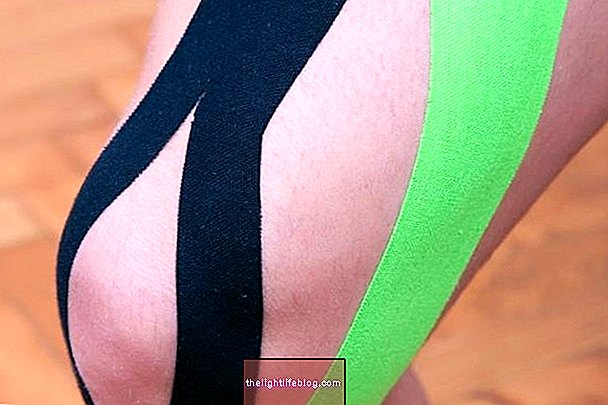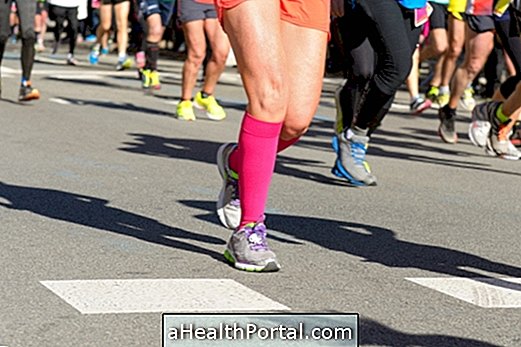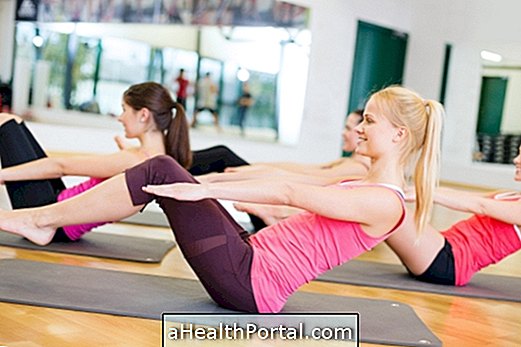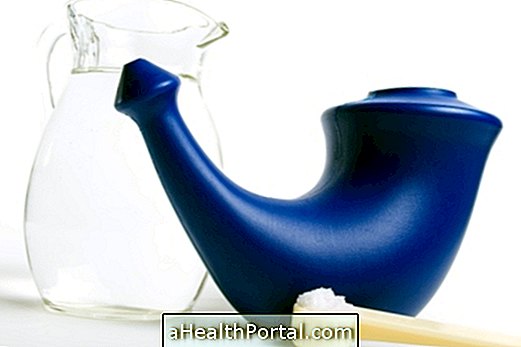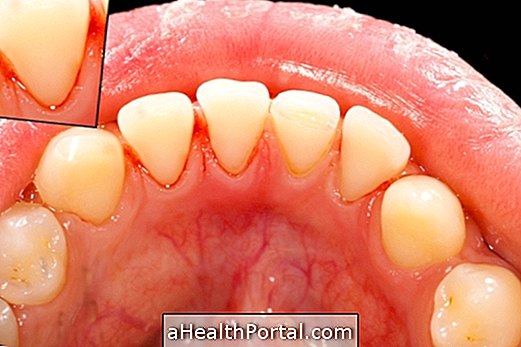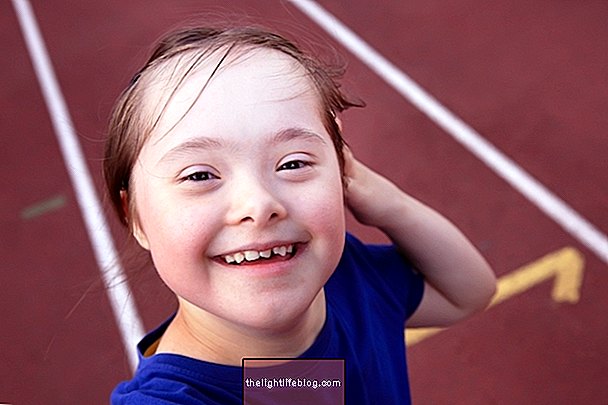Leg training to do at home is simple and easy, allowing you to work on your buttocks, calves, thighs and back of the legs, and can be done with or without the use of weights.
These exercises help to improve endurance and muscle strength, in addition to toning the skin, fighting sagging and, in the case of women, improving the appearance of cellulite. However, one must always take into account the physical conditions and limitations of the body to avoid injuries such as contusion, stretching or muscle strain.
Therefore, it is important to have a medical evaluation before starting any physical activity and a physical educator who can guide training that meets the needs and goals in an individualized way.
How to do leg training at home
Leg training at home can be done 1 to 2 times a week, with exercises that work on strength, endurance and balance, for example.
It is important, before starting training, to warm up to improve muscle performance, activate circulation and prevent injuries. A good warm-up option is to take a 5 minute walk, take 10 jumps in a row as fast as you can, or go up and down stairs for 5 minutes, for example.
Some exercise options for doing a leg workout at home are:
1. Plantar flexion

This exercise helps to strengthen the calf muscles, in addition to improving the body's balance and preventing injuries in running or walking training, for example.
How to do it: support yourself against a wall or the back of a chair. With the spine straight and the abdomen contracted, stand up and return to the starting position. This training can be done in 3 sets of 12 to 20 movements and with 20 to 30 seconds of rest between each set.
Weighted option: you can use shin guards, one on each leg, or hold weight in your hands like dumbbells or use pet bottles with water or sand, to intensify muscle work.
2. Leg lift

Leg lifting is an exercise that improves mobility, flexibility and muscle strength of the glutes and the back of the thigh, in addition to the hip muscles, and can help with body balance.
How to do it: take a chair and support a hand on the back. With the spine straight and the abdomen contracted, raise one leg forward and then bring the leg back, making movements as if the leg were a pendulum. Repeat the exercise with the other leg and return to the starting position. This training can be done in 2 to 3 sets of 10 to 15 repetitions.
Weighted option: leg elevation can be done using shin guards, one on each leg and with weight recommended by a physical educator.
3. Squat

The squat is a complete exercise for the legs as it works the gluteus, thighs, calf, back of the legs and abdomen.
How to do it: standing, spread your feet, in line with the width of your shoulders. The back should always be straight and the abdomen contracted. Slowly descend by flexing your knees, tilting your torso slightly forward and pushing your butt back farther, as if you were going to sit in an invisible chair. Descend until the knees are at a 90-degree angle and do not extend beyond the tip of the feet. Return to the starting position. Do 3 sets of 20 repetitions with 1 minute rest between sets. See other benefits of squats and how to do them correctly.
Weighted option: a kettle or halter ball can be used as weight and, if you do not have them, you can place one or more 1 kg packages of rice or beans in a backpack, for example. Thus, one should take the weight, and with both arms in front of the body, hold it and make the movement of the squat down with the arms aligned to the body.
4. Isometric squat

The isometric squat is another form of squat that works the muscles of the gluteus, thigh, hamstrings and lower back. This squat has the advantage of helping to prevent injuries, increases power, endurance and muscle definition, in addition to strengthening the muscles.
How to do it: support your back against a wall, separate your legs at a distance corresponding to the width of your shoulders. Bend your knees and descend towards the floor, as if you were going to sit in a chair, forming a 90 degree angle. Stay in that position for 45 to 60 seconds and return to the starting position. Repeat this series 3 times, with a 1-minute rest between each. Another option to do the isometric squat is to use a gym ball between your back and the wall.
Weighted option: you can use a dumbbell or a pet bottle filled with water as a weight and do the isometric squat by placing your arms in front of your body, with both hands together holding the weight in line with your body and between your legs.
5. Bulgarian squat

The Bulgarian squat is one of the most efficient workouts to work your thighs and glutes, improving muscle strengthening and stretching, as well as toning your legs.
How to do it: on your back, support one leg on a chair or a bench, keeping the other foot on the floor. Flex the knee of the leg that is resting on the floor, going down as if you were crouching. It is important to keep your spine straight and your feet and hips aligned. Do 3 sets of 10 repetitions with each leg, resting 1 minute between each set.
Weighted option: you can use a dumbbell in each hand to do the squats or use a pet bottle filled with water or sand or a 1 kg package of rice or beans, for example.
Check out other ways to do squats to strengthen your legs and how to do them.
What to do after training
After leg training, it is important to stretch to help relax your muscles, reduce muscle stiffness and prevent cramps, in addition to toning your muscles, improving flexibility and preventing injuries.
Leg stretches should include the muscles of the front and back of the thigh and calf. To do these stretches, weights are not necessary.
1. Elongation of the back of the thigh

Stretching the back of the thigh can be done sitting on the floor, allowing to stretch the posterior thigh muscles, the gluteus, the calf and the sole of the foot.
How to do it: sit on the floor with legs straight, bend one leg and with the spine straight and shoulders aligned, lean forward to reach the foot with one hand and try to pull it towards the body, holding for 20 to 30 seconds. Repeat with the other leg.
2. Elongation of the front of the thigh

Stretching the front of the thigh should be done standing up and with the back straight. This exercise allows you to stretch the quadriceps muscle of your thigh, as well as helping to improve the flexibility of your hips.
How to do it: support yourself on one leg and bend the other back, holding it with your hands for 30 to 60 seconds. Repeat with the other leg.
Check out more leg stretching options.
Was this information helpful?
Yes No
Your opinion is important! Write here how we can improve our text:
Any questions? Click here to be answered.
Email in which you want to receive a reply:
Check the confirmation email we sent you.
Your name:
Reason for visit:
--- Choose your reason --- DiseaseLive betterHelp another personGain knowledge
Are you a health professional?
NoMedicalPharmaceuticalsNurseNutritionistBiomedicalPhysiotherapistBeauticianOther
Bibliography
- EFDEPORTES.COM, DIGITAL MAGAZINE .. Effect of posterior chain stretching in bodybuilding practitioners. 2015. Available at:. Accessed on 02 Dec 2020
- GEHM, David G .; CHAOUACHI, Anis. A review of the acute effects of static and dynamic stretching on performance. Eur J Appl Physiol. 111. 11; 2633-2651, 2011
- HOTTA, Kazuki; et al. Daily muscle stretching enhances blood flow, endothelial function, capillarity, vascular volume and connectivity in aged skeletal muscle. J Physiol. 596. 10; 1903–1917, 2018
